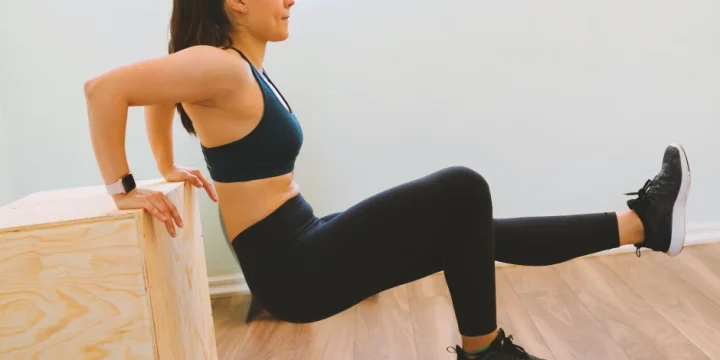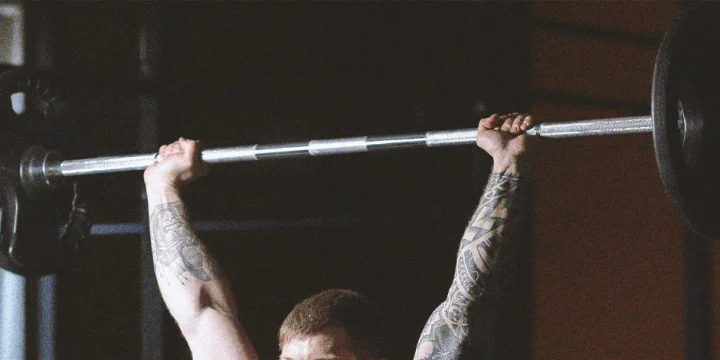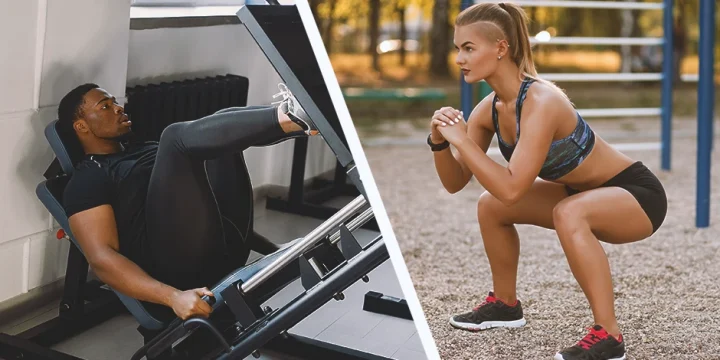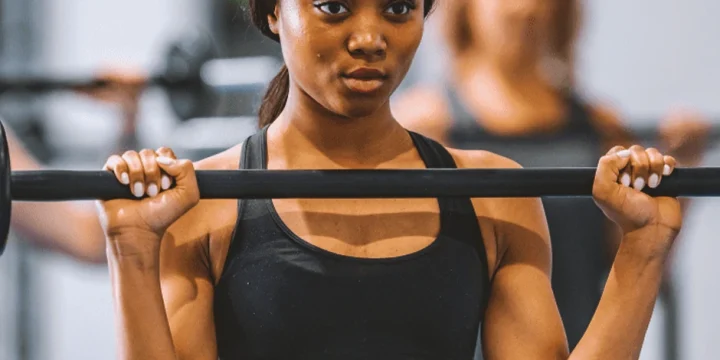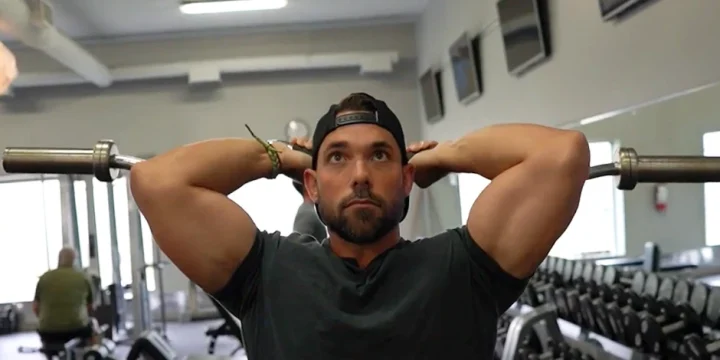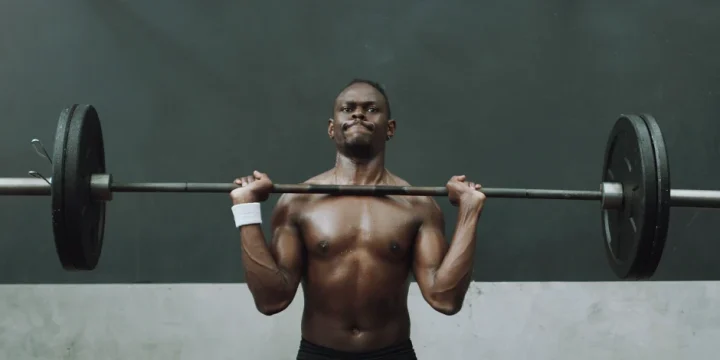During my years as a personal trainer, the Arnold press has usually been my go-to exercise for assisting clients in shaping their shoulders.
This particular exercise, devised by the legendary bodybuilder Arnold Schwarzenegger, effectively enhances the development of strong and well-defined shoulders by engaging all three heads of the deltoid muscles.
I have compiled various forms of the Arnold press in this article and detailed instructions on executing each variation correctly.
Additionally, I will explore the advantages of incorporating this exercise into your upper-body program and some of the science underlying its effectiveness.
Quick Summary
- The Arnold press can be performed in various positions, including seated, standing, one-arm, half-kneeling, one-arm Arnold press, and the alternating Arnold press, which can be executed both while seated and standing.
- The Arnold press offers many benefits, such as heightened muscle activation in the deltoids, expanded range of motion, improved hypertrophy, enhanced body composition, increased strength, improved joint stability, and greater engagement of the upper chest muscles.
- Studies published by Research Gate have proven the Arnold press to be a more effective exercise for activating the anterior and medial deltoid muscles as compared to the dumbbell overhead press due to a greater range of motion.
- From my years of training, I've found the Arnold press to be the ultimate exercise for sculpting strong, well-defined shoulders.
How to Perform the Arnold Press

The Arnold press can be performed in a seated position on a weight bench or while standing. Here is how to perform the seated variation with proper technique.
- Sit on an inclined bench (about 70 degrees) with your feet grounded.
- Hold dumbbells just above shoulder height, palms facing you. Remember, don't drop those elbows towards your belly; it'll wrongly stress your chest and biceps.
- Now, push up the weights, rotating your elbows to shift the focus from your shoulder's front to the sides.
- At the peak, squeeze those shoulders tight!
- Then, lower the weights slowly, keeping control. Your arms and shoulders should do the heavy lifting, so keep your back flat against the bench.
- Repeat until you finish three sets of twelve reps.
"There are a few pitfalls to avoid when performing the Arnold press. First and foremost, it's important to perform it as one fluid motion, rather than moving your elbows (and the dumbbells) laterally and then pressing them overhead. Instead, the weights should be moving upwards throughout the movement."
- Sam Rider, Health Journalist
Arnold Press Variations

The Arnold press variations are the seated Arnold press, standing Arnold press, single-arm Arnold press, alternating Arnold press, and half-kneeling single-arm Arnold press.
1. Standing Arnold Press
The dumbbell shoulder press is quite similar to the Arnold press, both seated and standing, but lacks Arnold's rotational movement.
Some of my clients prefer the standing variation for its core engagement and the fact that it targets all three areas of the deltoid muscles and activates several stabilizing muscles in the back.
Notably, a study from the National Library of Medicine shows that standing shoulder presses with dumbbells, which require more stability, significantly increase deltoid muscle activity [1].
To perform this variation, follow the steps outlined for the seated Arnold press variation mentioned above, but maintain a standing position.
"You want to avoid going too heavy with this movement, as it's tougher than a standard shoulder press. Going too heavy will place unneeded stress on the internal rotators and, like a regular shoulder press, will probably lead to an arched back and reduced range of motion."
- Tom Maccormick, Personal Trainer
2. Single-Arm Arnold Press
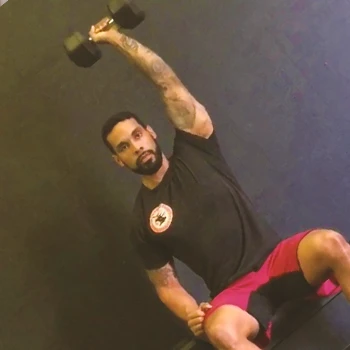
This Arnold press variation is an excellent choice for enhancing mobility and strength, and it can be executed while standing or in a seated position.
To perform this variation:
- Select a single dumbbell and ensure you are seated or standing upright on a 90-degree bench.
- Bring the dumbbell to shoulder level, ensuring your elbow is positioned beneath your hand. From there, follow the same steps as you would with the standard standing or seated Arnold press variations.
3. Alternating Arnold Press
This variation contributes to shoulder and core stability and can help you develop the ability to generate power from the hips and core, which is then transferred up through the arms.
- Sit on a bench while holding a pair of dumbbells in your hands.
- Position the dumbbells at shoulder level, with your palms facing inward.
- Begin by rotating and pushing one dumbbell upward until your arm is fully extended.
- Slowly lower the dumbbell back to the starting position.
- Repeat the same motion with the other arm, pushing the second dumbbell up and lowering it back down.
- Continue alternating between arms, performing the exercise in a controlled manner.
- Aim to complete three sets of twenty repetitions.
Related Posts:
4. Half-Kneeling DB Arnold Press
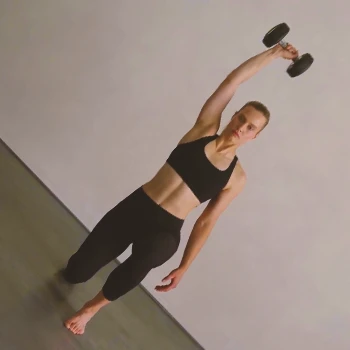
This variation involves assuming a half-kneeling position, actively engaging your core muscles and improving stability and overall strength throughout the exercise.
To perform this exercise:
- Assume a half-kneeling position by bringing one leg forward and placing the other knee on the floor.
- Grab a single dumbbell with one hand, holding it at shoulder level with your palm facing inward.
- Proceed to follow the same steps as you would with the previous Arnold press variations.
"Tucking your hips underneath, you will encourage a neutral spine. Avoid leaning back through your thoracic as you push the dumbbell overhead. This shifts the load of the press from your shoulders to your chest."
- Nicolle Harwood-Nash
Read More: Half-Kneeling Quad Stretch
What Are the Benefits of the Arnold Press?

From my experience training clients, the benefits of the Arnold Press are clear and multifaceted. They include higher muscle activation in the delts, increased range of motion, improved hypertrophy, enhanced body composition, promoted strength and joint stability, and more upper chest engagement.
Higher Muscle Activation in the Delts
Studies published on ResearchGate have proven the Arnold press to be a more effective exercise for activating the anterior and medial deltoid muscles as compared to the dumbbell overhead press due to a greater range of motion (ROM) [2].
Increased Hypertrophy
The Arnold press is an effective exercise for increasing strength in your shoulder muscles due to its excellent range of motion.
According to studies published by the National Institutes of Health, engaging in resistance training with a full range of motion provides significant benefits of hypertrophy in the lower body musculature compared to exercise with a limited ROM [3].
Enhanced Body Composition
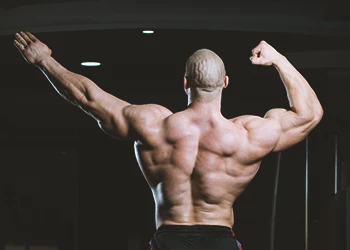
In my experience, clients who've incorporated the Arnold press into their routines have seen notable improvements in body composition.
The Arnold press, targeting the entire shoulder rather than isolating a single muscle, stands out from other shoulder exercises like the standard dumbbell press or lateral raises.
Its comprehensive engagement promotes calorie expenditure, allowing for more efficient calorie burning in a shorter duration, making it a superior choice for those aiming to enhance their shoulder development
Learn More: Simple Body Composition Exercises
Improved Posture
The Arnold press can help increase flexibility in the upper back and chest area, improving posture and reducing back and neck pain.
Promote Joint Stability

The rotational movement involved in this exercise challenges and activates the stabilizer muscles surrounding the shoulder joint.
The Arnold press can enhance your coordination and stability through regular practice, improving shoulder muscle stability.
More Upper Chest Engagement
In my experience working with clients, I've noticed that the Arnold press uniquely targets and engages the clavicular head more effectively than the standard shoulder press.
By bringing your elbows forward, beyond shoulder level, during the Arnold press, you activate the upper chest muscles, which can lead to a well-rounded and aesthetic physique.
Versatility
The benefits of the Arnold press go beyond higher muscle activation in the delts; it's a versatile exercise that can be seamlessly incorporated into various workout routines.
FAQs
What Does the Arnold Press Work?
The Arnold Press works all three heads of the deltoid muscle: the anterior, medial, and posterior deltoids. The Arnold Press effectively engages these deltoid muscles when transitioning from palms facing you to a shoulder press position. The traps, triceps, and core are secondary Arnold press muscles worked.
Is the Arnold Press Worth Doing?
Yes, the Arnold Press is worth doing. When performed with proper form, it offers several advantages, such as increased muscle activation, enhanced upper chest engagement, and an extended range of motion.
References:
- https://pubmed.ncbi.nlm.nih.gov/23096062/
- https://www.researchgate.net/publication/322132613
- https://www.ncbi.nlm.nih.gov/pmc/articles/PMC6977096/
About The Author
You May Also Like
